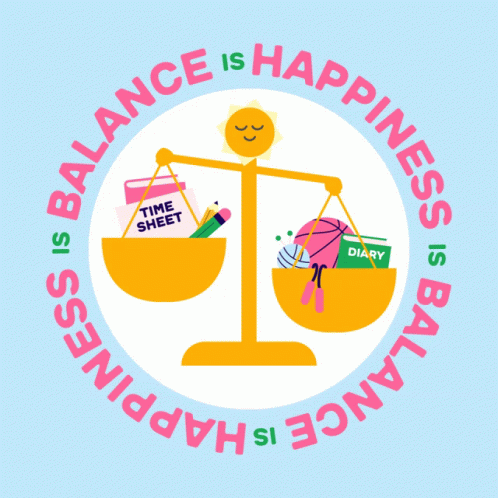Shhh… Is That the Sound of a New Employee? Here’s how “Quiet Hiring” Could Be the New Norm
It’s no secret that securing top talent takes some serious time and energy — especially if the candidate pool is slim or there’s significant pressure from the higher-ups to keep costs to a minimum. Also, have you ever conducted interview after hopeless interview?

In fact, ask any manager and they’ll likely regale you with the challenges they’ve experienced in identifying top talent and recruiting them for the job. It takes up time, and it can be a long journey that may or may not actually pay off for you in the end.
All of this has led to the prevalence of a phenomenon known as “quiet hiring.” Often uttered in the same breath as other recent-ish buzzwords like “quiet firing” and “quiet quitting,” this particular brand of quiet offers something far more promising: the prospect of incorporating new skill sets into your workplace simply by giving existing employees new responsibilities. In some cases, it could also involve hiring short-term contractors to perform these duties.
What is Quiet Hiring?
To understand the concept of quiet hiring, it’s helpful to learn about its precise opposite: quiet quitting. This is a not-so-silent viral phenomenon that describes some 50% of the American workforce, describing the way some employees simply stop doing extra duties and deliver only the bare minimum in the workplace.
It’s a clear and concerning sign of dissatisfaction on the job, and it may occur if there isn’t enough energy given to devising clever employee engagement ideas. For every employee who’s mentally checked out, though, there’s one that soars higher than the rest of the flock and stands out for their sheer ability to get stuff done. These are the perfect candidates for the more uplifting phenomenon known as quiet hiring.

Made popular by Google, it’s a strategy that’s entirely different from traditional recruitment methods, deployed mainly as a way to ensure that said stuff does get done — and done well. These high-achieving employees have already displayed a knack for producing measurable results, making them far more likely than an outside candidate to immediately deliver on other goals, too.
How to Implement Quiet Hiring
It’s understandable that the idea of the quiet hiring process may be appealing to managers who want to save time...and money. At the same time, it’s not exactly “hiring” in the traditional sense — no need to fill your time with interview after interview.
Instead, think of this as a way of capitalizing on what your best employees do… well, best! They’re the heroes here, remember? You’re offering them the opportunity to grow in the workplace — but you’re also ensuring that your company’s specific needs are met, without the risk of wasting valuable time that would otherwise be allotted to onboarding and training new hires.
Because — let’s keep it real — work can be stressful. Add some new challenges to the mix and that can really shake things up. When you make it worth their while, though, you can be sure they’ll rise to the new challenges.
Without question, the first step is to speak with your employee about your plans. Make it explicitly clear, and explain why you’d like to recruit them to handle these new tasks. Be as open as possible — employees appreciate the transparency, and you can feel good knowing you’ve kicked things off on a completely honest and forthright note.

Make it work by offering them a pay raise that is fair compensation for the additional workload. Employees will undoubtedly expect this. The catch is that many companies turn to quiet hiring as an effect of the economic slump, potentially making it tricky to negotiate fair and reasonable terms. On the flip side, it’s usually a far more economically sound choice than hiring someone new.
An alternative is to offer a one-time bonus, an option that may be more in line with your budgetary demands — and it’s especially more of a practical solution if the employee’s new responsibilities are just temporary. You could even offer extra paid leave if your company doesn’t provide unlimited time off already. That’s a win-win strategy too, since it shows appreciation for your employees while helping them avoid dreaded burnout.
Finally, be mindful of what quiet hiring looks like not only for your company, but your overachieving employees. Yes, they’re the cream of the crop, and yes, they’re so good at what they do they give you goosebumps — but let’s not take advantage of their professional superpowers. Extra work means potentially feelings of exhaustion and overload, so check in with them often to let them know their efforts aren't going unnoticed. In addition to the compensation outlined above, you can offer them health and wellness benefits such as free access to meditation and stress-busting apps, access to counseling, complimentary fitness courses, and more.

The Pros and Cons of Quiet Hiring
Quiet hiring can benefit both companies and the employees. But — and this is a big caveat — it needs to be deployed properly to really be effective. Employees are smart (that’s why you want to quiet hire them, right?) and they are well aware that accepting new responsibilities could be an easy way for their employers to dodge hiring outsiders.
From your perspective, hiring internal employees allows you to make the best possible use of your talented team. For time-sensitive or temporary duties, there’s almost no better way to handle it than to delegate to an existing superstar employee. On the downside, you risk losing them to the new role. They may need to put their energy fully into the new task, for example, and you might need to rope in another employee to fill their shoes in the meantime.
So, it can be a juggling act, and you need to be prepared for whatever that might bring. Is the risk worth taking? For many employers, the answer is resoundingly “yes” — there’s no way around the fact that it can be a valuable decision for your business from a financial perspective.
Employees, meanwhile, can really grow when they take on new responsibilities in the workplace. They’ll develop stronger skill sets, build on what they already know, and add something additional to their resume. It could even serve in improving employee retention, as some employees see the extra workload as beneficial to their professional futures. Sure, it makes them invaluable to your company in the moment — but also incredibly marketable and hirable in the future.
That’s the long-term benefit, though. It’s really up to you, the hiring manager, to make sure that quiet hiring doesn’t just look or feel like you’re taking advantage of your awesome employees. Make it worth their while with clarity, direction, and meaningful incentives, whether it’s extra compensation, flexible scheduling, or time off.

There’s no way around it: Quiet quitting is on its way out, paving the way for quiet hiring to deliver in a big way for your business. Adopting this practice can be smart for the company and good for employees, too — especially when you make it clear that you value them and want to reward them for the extra work.
What is Goosechase?
At Goosechase, experience is everything. Originally inspired by scavenger hunts, Goosechase is an online platform that enables organizations and schools to engage, activate, and educate their communities through delightful interactive experiences. Sign up and try creating a free recreational Experience, or check out our Pricing!





